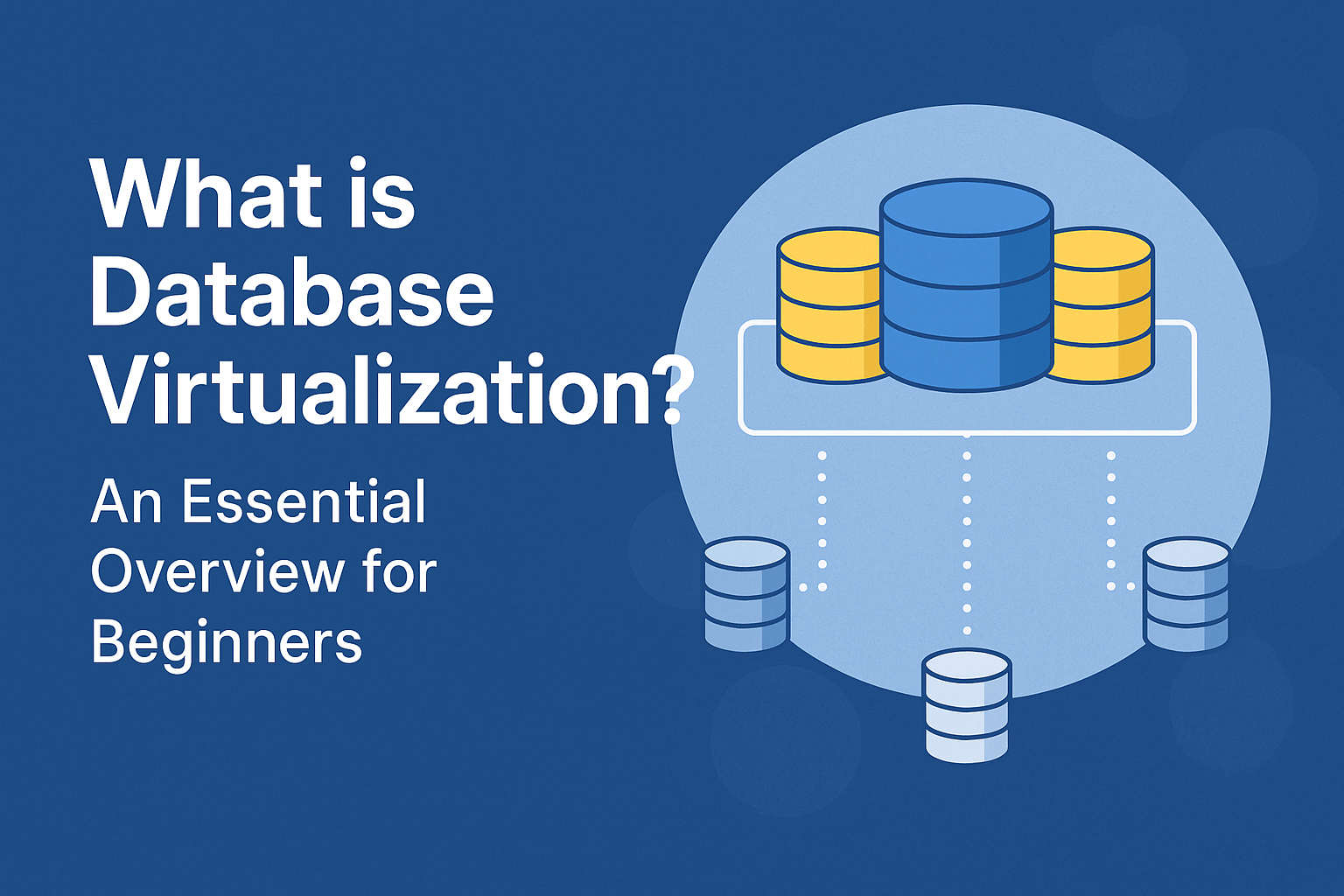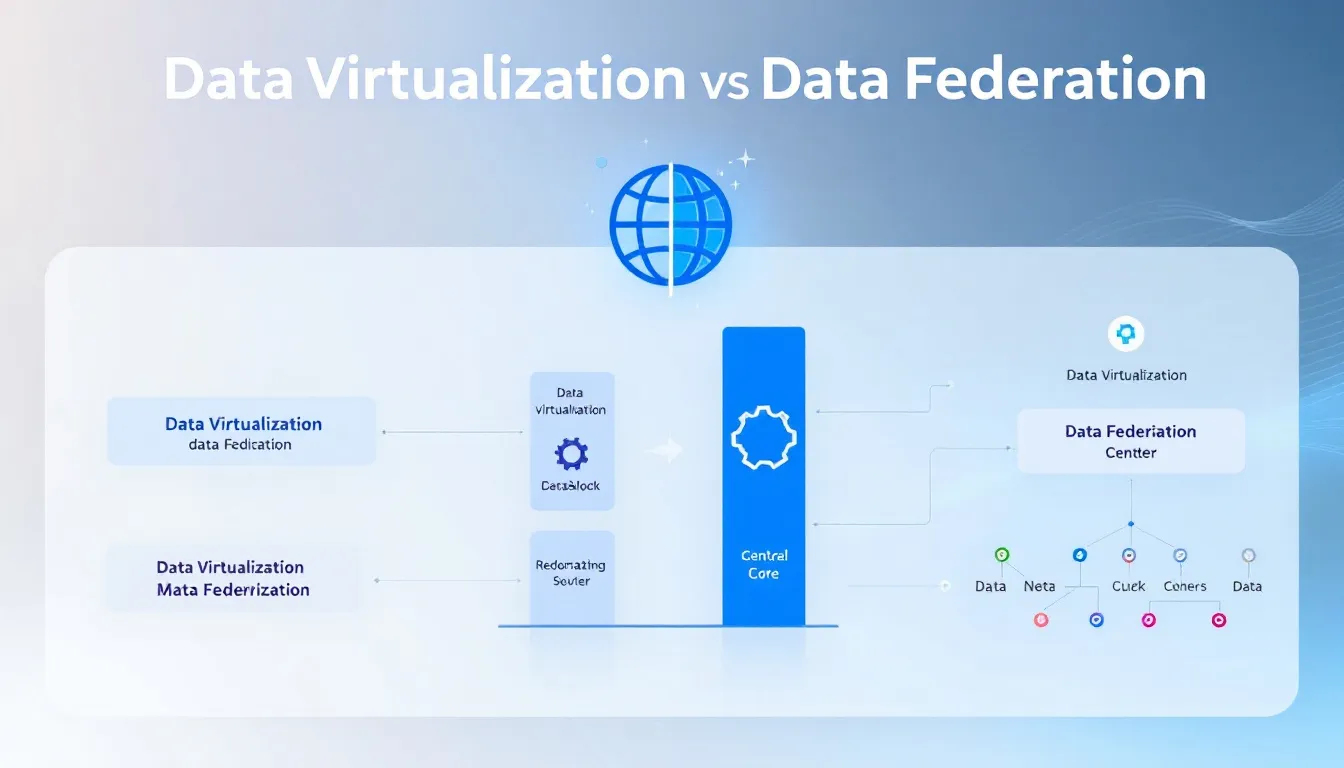Best Data Virtualization Tools in 2025
Looking for the best data virtualization tools in 2025 to enhance your data integration processes?
In this guide, we’ll review the top options, detailing their features and ideal environments. Whether you need seamless integration, real-time analytics, or support for various data sources, you’ll find a tool that suits your needs.
Quick Summary
In 2025, data virtualization is no longer a luxury—it's a necessity. The best tools streamline access to real-time data across diverse systems without duplication, enabling faster insights, simplified infrastructure, and greater agility.
Whether you're in manufacturing, finance, or tech, this guide reviews the top data virtualization platforms to match your needs—from Denodo’s robust governance to Factory Thread’s seamless integration for industrial environments.
Struggling with your data?
If your operations are slowed by scattered systems, delayed reports, or reliance on manual integration, you're not alone.
Many teams battle outdated architectures that can't keep pace with today’s demands. Data silos make decision-making slow and inconsistent.
That’s where data virtualization comes in—it connects ERP, MES, CRM, and other systems in real time, giving your team unified access to reliable, up-to-date information without duplicating or relocating data.
Why listen to us?
I’m Nikhil Joshi, founder of Factory Thread. I’ve spent the past several years working directly with manufacturers to solve one of their biggest challenges—making sense of fragmented, messy data.
From legacy MES systems to real-time shop floor insights, I’ve seen what works (and what doesn’t) when it comes to data integration. This guide is built on those experiences, giving you practical advice backed by real-world implementation.
How to Choose the Best Data Virtualization Tool
Selecting the best data virtualization tool depends on your organization’s specific needs, data types, and existing infrastructure. Consider the following aspects:
-
Data Sources: Choose a tool that can integrate data from various data sources seamlessly.
-
Performance: Look for tools with advanced optimization strategies to ensure fast and efficient data access.
-
Usability: An intuitive interface and centralized management console can significantly enhance usability.
-
Cost-Effectiveness: Ensure the tool minimizes infrastructure investment while maximizing efficiency.
-
Scalability: The tool should support both vertical and horizontal scalability to handle growing data needs using virtualization software.
Considering these factors will help you choose a data virtualization tool that best aligns with your needs and enhances agile data management, including its data virtualization capabilities, data services, data views, and data virtualization technology.
16 Top Data Virtualization Tools in 2025

Factory Thread - Best for Manufacturing Data Integration
Factory Thread is purpose-built for manufacturers aiming to unify fragmented systems like MES, ERP, CRM, and quality platforms.
It creates a logical data layer that virtualizes real-time data across these systems without duplicating or relocating it. This gives teams fast, consistent access to actionable insights and accelerates decision-making.
Key Features:
-
Pre-built industrial connectors (e.g., Siemens, SQL, APIs, flat files)
-
Visual flow designer with drag-and-drop functionality
-
AI Workflow Assistant for prompt-based automation
-
Real-time monitoring and anomaly alerts
-
Multi-environment support and on-prem deployment
-
Secure, scalable infrastructure with role-based access
Factory Thread helps manufacturers modernize fast—bridging legacy systems with real-time intelligence to enhance agility, reduce downtime, and improve data accuracy.
Denodo - Best for Comprehensive Data Management

Denodo stands out for its comprehensive data management solutions, including:
-
Enabling access to enterprise, big data, and cloud sources
-
An architecture that allows for real-time data access while minimizing the need for data replication
-
AI-driven performance
-
Seamless integration across multiple cloud environments These features simplify integration and provide a unified view of all the data from disparate data sources.
Although there is a steep learning curve, the robust data governance and security measures make it a worthwhile investment.
Read now: Alternatives to Denodo
Pros:
-
AI-driven performance for seamless integration
-
Real-time data access minimizes the need for data replication
-
Robust data governance and security measures
Cons:
-
Steep learning curve for new users
IBM Cloud Pak for Data - Best for Hybrid Cloud Environments

IBM Cloud Pak for Data is a standout tool for unifying data across hybrid cloud environments. Its combination of data virtualization with artificial intelligence analytics makes it particularly suitable for enterprises looking to enhance decision-making. It allows access to data without requiring its transfer, effectively addressing data silos. The complexity in installation and deployment is outweighed by its benefits in data integration and AI analytics, establishing it as a leader in the field.
Pros:
-
Excellent for hybrid cloud environments
-
Combines data virtualization with AI analytics
-
Recognized as a leader in data integration tools by Gartner
Cons:
-
Complex installation and deployment
Informatica PowerCenter - Best for Enterprise Integration

Informatica PowerCenter, tailored for enterprise data integration, features a code-free system and a wide array of pre-built connectors. Its robust integration capabilities and scalability make it ideal for large-scale data projects. While the higher costs might be a drawback, its comprehensive features make it well-suited for businesses needing robust integration capabilities, data quality tools, and business intelligence.
Pros:
-
Strong integration capabilities There are inbuilt tools for data quality. These tools help ensure the integrity and accuracy of the data.
Cons:
-
Relatively higher costs
Oracle Data Integrator - Best for Oracle Ecosystems
%20logo.jpg?width=600&height=193&name=Oracle%20Data%20Service%20Integrator%20(ODSI)%20logo.jpg)
Oracle Data Integrator is designed for organizations using Oracle applications, ensuring seamless data flow and enhancing operational efficiency. It is particularly effective for organizations that prioritize Oracle applications, providing a streamlined data handling process. The limited support for non-Oracle systems could restrict integration flexibility for some users.
Pros:
-
Excels in Oracle environments
-
Enhances operational efficiency
-
Seamless data flow within Oracle applications
Cons:
-
Limited support for non-Oracle systems
Red Hat Data Virtualization - Best for Developer-Led Environments

Red Hat Data Virtualization caters specifically to developer-led teams, leveraging open-source methodologies to create virtual data layers and support multiple data sources and virtual views. It is particularly popular among tech-savvy teams, though enterprises with microservices and containers may experience complexity. It provides a unique data grid for quick access, making it a favorite among developer teams.
Pros:
-
Designed for developer-led teams
-
Supports multiple data sources
Cons:
-
Complexity in microservices and container environments
TIBCO Data Virtualization - Best for Structured and Unstructured Data

TIBCO Data Virtualization handles integration for both structured and unstructured datasets, making it versatile across various industries. Its capability to manage different data types sets it apart from other tools. However, the integration process can be complex, which might require additional resources and expertise. Despite the complexity, its versatility in data management makes it valuable for many organizations.
Pros:
-
Handles both structured and unstructured data
-
Versatile in data management
Cons:
-
Integration can be complex
SAP Hana - Best for Real-Time Analytics

SAP Hana is an in-memory database that enables real-time analytics, providing real-time access to data across different sources. It can be deployed on both on-premise and cloud platforms, offering flexibility for organizations. However, it is best suited for organizations already using SAP applications. Despite this, its powerful real-time analytics capabilities make it an excellent choice for businesses needing historical data and real-time insights.
Pros:
-
Enables real-time analytics
-
Offers real-time access to data across different sources
-
Flexibility in deployment (on-premise and cloud)
Cons:
-
Best suited for organizations using SAP applications
Delphix Data Platform - Best for Test/Dev Environments

Delphix Data Platform specializes in data virtualization for test/dev environments by:
-
Creating virtual, lightweight copies of production databases
-
Allowing users to refresh test environments up to seven times faster compared to traditional methods
-
Automating test data management, which significantly enhances project velocity and software quality while delivering data efficiently. Additionally, the platform enables organizations to virtualize data effectively, ensuring seamless data delivery.
While storage optimization might be needed, these features provide a substantial solution benefits.
Pros:
-
Enhances speed of provisioning
-
Refreshes test environments up to seven times faster
Cons:
-
Storage optimization might be needed
Data Virtuality - Best for Unified Data Infrastructure

Data Virtuality combines data virtualization and ETL into a single platform, enabling both real-time and batch processing. It supports over 200 data connectors and offers a logical data warehouse architecture. This flexibility makes it ideal for organizations that want unified control over their data infrastructure.
Pros:
-
Combines virtualization and ETL
-
Extensive connector library
Cons:
-
May require technical expertise for complex configurations
AtScale - Best for BI Acceleration and Semantic Modeling

AtScale provides a semantic layer on top of your data infrastructure, accelerating business intelligence (BI) workflows. It enables live connections to data sources without replication and integrates easily with tools like Tableau and Power BI.
Pros:
-
Optimized for BI and analytics
-
Strong integration with leading BI tools
Cons:
-
Focused use case; not ideal for broad data engineering tasks
CData Connect - Best for SaaS and Cloud Integration
/cdata-logo.png?width=550&height=225&name=cdata-logo.png)
CData Connect offers no-code data virtualization across SaaS apps, databases, and APIs. It allows users to create live connections to cloud data without replication and is particularly strong in unifying fragmented data sources in real time.
Pros:
-
No-code interface
-
Broad SaaS integration
Cons:
-
Primarily cloud-focused, limited on-premise support
Rocket Data Virtualization - Best for Legacy System Integration

Rocket® Data Virtualization focuses on integrating legacy and mainframe systems with modern applications. It creates a unified data layer across old and new systems, helping organizations modernize without disrupting existing infrastructure.
Pros:
-
Strong support for legacy systems
-
Real-time access without migration
Cons:
-
Best suited for organizations with legacy tech stack
K2View - Best for Operational Data Fabric

K2View offers a micro-database per entity model, ideal for real-time operational data use cases. It virtualizes and integrates fragmented data into a unified view for each customer, product, or device.
Pros:
-
Entity-based virtualization model
-
Fast performance for real-time apps
Cons:
-
Unique architecture may require rethinking traditional models
Starburst (Trino) - Best for SQL on Data Lakes

Starburst, built on Trino (formerly PrestoSQL), enables federated SQL queries across data lakes and warehouses. It supports ANSI SQL and allows organizations to analyze data where it lives, reducing the need for ETL.
Pros:
-
High-performance SQL on distributed data
-
Works across lakehouses and warehouses
Cons:
-
Requires strong data engineering expertise
Dremio - Best for Self-Service Analytics on Lakehouses

Dremio provides a powerful SQL engine for querying cloud data lakes. With features like data reflections and acceleration layers, it empowers analysts to work directly on data without moving it. It’s built for open formats like Parquet and Iceberg.
Pros:
-
Built for lakehouses and open formats
-
Strong self-service analytics capabilities
Cons:
-
May need tuning for performance at scale
Summary
Data virtualization tools are essential in today’s data-driven world, providing efficient solutions for data integration, management, and real-time analytics. Each tool discussed has its unique strengths, making it suitable for different organizational needs. From Denodo’s comprehensive data management to SAP Hana’s real-time analytics, these tools offer various capabilities to meet diverse requirements. Choose the one that aligns best with your specific needs to drive your organization’s success.
Frequently Asked Questions
What is the main benefit of data virtualization?
The main benefit of data virtualization is that it enables real-time access to data from various sources without the need for data movement or replication. This enhances efficiency and agility in data management.
Why is Denodo considered the best for comprehensive data management?
Denodo is considered the best for comprehensive data management due to its ability to provide real-time data access, which reduces the necessity for data replication while ensuring high data quality. This robust solution effectively addresses complex data management needs.
How does IBM Cloud Pak for Data enhance hybrid cloud environments?
IBM Cloud Pak for Data enhances hybrid cloud environments by unifying data and integrating data virtualization with AI analytics, which significantly improves decision-making capabilities.
What makes SAP Hana suitable for real-time analytics?
SAP Hana is suitable for real-time analytics due to its in-memory database technology, which allows for immediate data processing and insights from various data sources. This capability ensures that businesses can make timely and informed decisions.
How does Delphix Data Platform benefit test/dev environments?
Delphix Data Platform significantly enhances test and development environments by creating virtual copies of databases, which allows for rapid provisioning and efficient refresh of test environments. This leads to increased productivity and agility in your development processes.
Share this
You May Also Like
These Related Stories

What is Database Virtualization? An Essential Overview for Beginners

Data Virtualization vs Data Warehouse: Essential Differences Explained



No Comments Yet
Let us know what you think